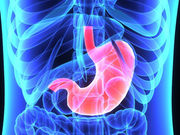Findings for patients with peripheral artery disease and high levels of trimethylamine N-oxide
THURSDAY, Oct. 20, 2016 (HealthDay News) — Patients with peripheral artery disease (PAD) who also have high levels of trimethylamine N-oxide (TMAO), a by-product of meat consumption, may have a higher risk of dying within five years, compared with those with the lowest levels, according to a study published online Oct. 19 in the Journal of the American Heart Association.
W.H. Wilson Tang, M.D., a professor in medicine at the Cleveland Clinic, and colleagues studied the relationship between PAD and TMAO in 821 men and women seen at the Cleveland Clinic. The average age of the study volunteers was 66 years. All were screened for PAD and levels of TMAO. The study participants’ health was then followed for five years between 2001 and 2007.
After adjusting the data to account for traditional risk factors, inflammatory biomarkers, and history of coronary artery disease, the researchers found that patients with the highest levels of TMAO had double the odds of dying during a five-year period than those with the lowest levels of TMAO (adjusted hazard ratio, 2.06).
“TMAO, a pro-atherogenic metabolite formed by gut microbes, predicts long-term adverse event risk and incremental prognostic value in patients with PAD,” the authors write. “These findings point to the potential for TMAO to help improve selection of high-risk PAD patients with or without significant coronary artery disease, who likely need more aggressive and specific dietary and pharmacologic therapy.”
Full Text
Copyright © 2016 HealthDay. All rights reserved.








